Recent Posts
Navigating the Aftermath of Storm Damage | SERVPRO of Kent
6/22/2024 (Permalink)
 Are you left with the aftermath of storm damage to your home? Call SERVPRO of Kent today. We are here to restore quickly!
Are you left with the aftermath of storm damage to your home? Call SERVPRO of Kent today. We are here to restore quickly!
We have all seen coverage of towns after a storm rips through the area, and it can be really overwhelming and emotional to see all of the damage left behind as a result of rain, wind and other storm elements.
Storm damage can happen to anyone at any time, so knowing what to do after the storm passes is essential to your safety. Follow the tips below to stay safe and to ensure you make a full recovery.
When the Storm Passes
You have done all you could and are currently hunkered down safely in your safe shelter location in your home. The wind is slowly dying down, it’s not raining as hard and the weather alert has finally expired.
While that might signal the “all clear” to get up and check out your home, be cautious! Check the radar or tune into your weather radio to make sure another round of storms isn’t on the way.
If it is safe to get up and investigate your home, bring your phone with you just in case you run into any trouble. Walk slowly and carefully, as broken glass, bent nails or shattered floorboards can be really dangerous.
Now is also the time to call any family members who were not home when the storm passed through and send someone to go check on your neighbors. Storms impact homes differently, even if they are just across the street from you. Once you have deemed everyone safe and no emergency services are required, call up SERVPRO of Kent.
What Our Storm Restoration Looks Like
Recovering quickly after suffering storm damage is vital. In many circumstances, storm damage can make your home more vulnerable to further damage if there are holes or structural issues anywhere in your home.
Our team will arrive quickly to get started on your restoration. In the meantime, take pictures of the damage so you can use those images in your storm damage insurance claim.
We can be at your home quickly, but sometimes it is necessary for you to take preventive steps while you wait for us to arrive. If it is still raining or drizzling but you have a broken window or a tree fell on your house and your living room is now exposed to the elements, quickly secure tarps or boards. This isn’t a permanent fix, but it can help protect your possessions from further damage. You can also start the process of pulling your belongings out of the affected area.
Our team will get right to work professionally securing your home, and then we will turn our attention to your damaged floors, roof and walls. We will remove standing water, dry out your home and tackle any repairs with confidence. Let us help you put your home back together faster.
Don’t wait to recover from storm damage! Call SERVPRO of Kent for quick assistance.
Tracking Down Water Leaks With Confidence | SERVPRO of Kent
3/22/2024 (Permalink)
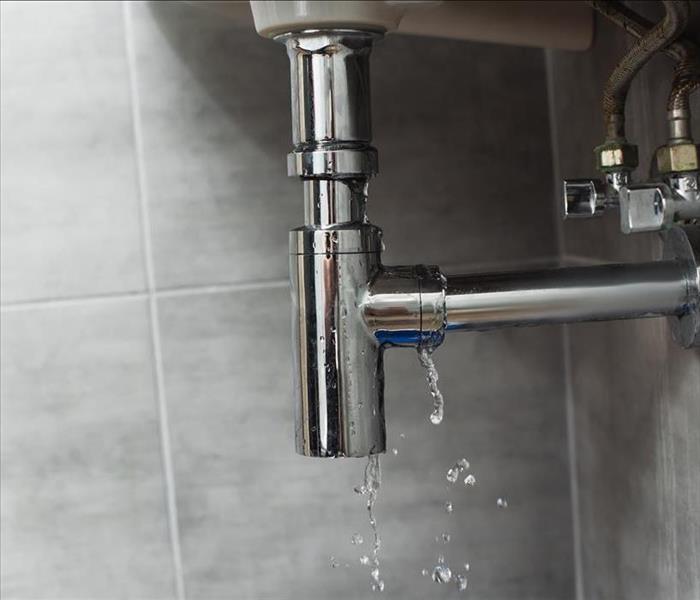 Are you dealing with the aftermath of home water damage? SERVPRO of Kent is here for the rescue. Call us now!
Are you dealing with the aftermath of home water damage? SERVPRO of Kent is here for the rescue. Call us now!
You are going about your day and walk into your utility room to grab something, only to be surprised by soaked socks and a floor full of water. Did someone simply knock over the dog’s water bowl, or is the cause something more sinister?
Discovering a puddle or a potential water leak can be really frustrating. Not only can it be tricky to track down the source, but it can also quickly lead to further issues if you don’t act fast. Knowing where to look can help you identify the source of water leaks quicker so you can stay in control.
Be an Investigator
You will have to do a little investigation around your home in order to find the source of water leaks. Water has the sneaky ability to infiltrate the smallest gaps and cracks, which can easily lead to water that gets behind your walls or under your floors. Start looking around windows, doors, skylights or any place in your home that has direct access to the outside.
Another common place for water leaks to occur is around your pipes. Water pipes are all over your home and are constantly circulating water or bringing it in and out of your house. A simple loose connection or faulty line can lead to serious water troubles. Check your pipe connections regularly and recaulk seals as necessary.
The Threat of Appliances
We all rely heavily on our appliances to tackle the jobs we don’t want to do ourselves. After all, who has time to hand-wash laundry or do all of the dishes yourself?
While we rely on them, appliances like dishwashers, water heaters and washing machines have the potential to leak at any time. If you notice a drip coming from the bottom of an appliance or smell the musty odor of mold, it’s time to pull the machine away from the wall to have a look.
If you do discover the leak is coming from one of your appliances, shut off power to the machine right away to turn it off and then shut the water valve to ensure water cannot keep flowing onto the floor. After that, pick up the phone and call SERVPRO of Kent!
Why a Professional Restoration Matters
You might think you have it under control by simply mopping up the water, but unfortunately, that might not be enough. Depending on how long the water was sitting before it was discovered, it could have leaked under your floorboards or behind your walls, and that moisture can be really hard or even impossible to dry out on your own.
Our team has the tools and proper drying equipment to make sure your entire space is dried. Our air movers and blowers will get right to work and we can use our thermal imaging cameras to track down even the smallest amount of residual moisture. When we are through, our team will address any repairs if the water compromised your home or damaged it in any way.
Water leaks can cause serious water damage in your home. Call SERVPRO of Kent to handle your entire restoration.
Taking Control of House Fires the Smart Way | SERVPRO of Kent
12/22/2023 (Permalink)
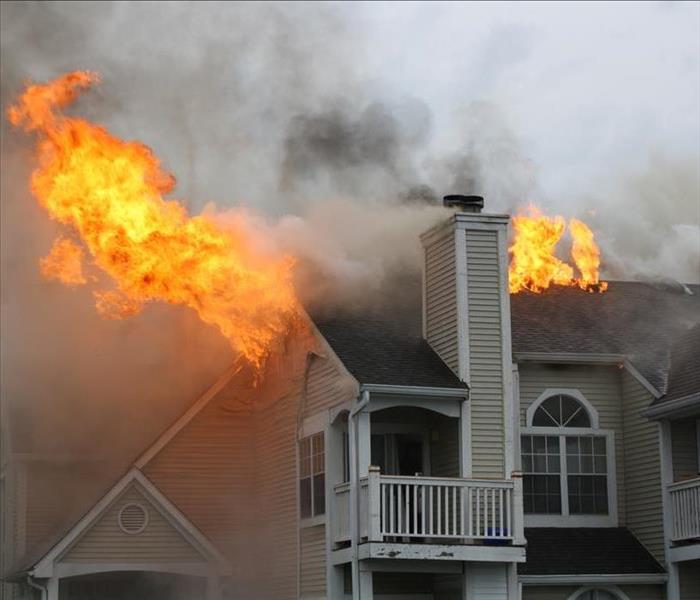 We know how damaging an unexpected fire can be to your home. That's why we have a team of experts ready to help. Call SERVPRO of Kent now!
We know how damaging an unexpected fire can be to your home. That's why we have a team of experts ready to help. Call SERVPRO of Kent now!
What is your favorite meal to prepare in your kitchen? Whether it is an extravagant three-course dinner or a simple box of mac and cheese, chances are that you will be using heat to cook your food—and that can be risky from time to time.
The majority of house fires start in the kitchen, and they can quickly get out of control if you don’t know how to extinguish the flames in the right way. Follow these tips below to learn different ways to reliably put out a kitchen fire so you can take control during a true fire emergency.
Start With Safety
The best kind of house fire is the one that never starts! Preparing your work surface is a crucial part of reducing your risk of a kitchen fire. Start by removing as many flammable materials as possible, like pot holders, oven mitts and kitchen towels, and keep your sleeves rolled up while you work.
Grab a lid from your pot and pan set and keep it next to the stove while you are cooking. If a spark flares up or a flame from your gas burner grows really big unexpectedly, you can quickly throw the lid over your pan and that will extinguish the fire fast.
It is never recommended to put out a kitchen fire with water because water and grease do not mix well. Always remember to smother a grease fire.
What to Do First
If you are cooking away and a fire breaks out, use your lid right away to toss over your pan. Either the flames will go out immediately or the lack of oxygen will slowly extinguish it.
If the fire grows outside the barrier of your pan, run to grab your fire extinguisher and pass it over the flames. If the fire started inside your closed oven, DO NOT open the door. Turn off your oven and wait for the flames to slowly die out.
Remember, if you ever feel unsafe or unwilling to stay to put out the fire, back up and get out of your home right away. Kitchen fires can quickly consume entire rooms and homes in minutes, so getting to safety should be your first priority and then call 911.
How SERVPRO® Can Help You Recover
The trusty firemen and women will take control and put out your fire completely, but they are not going to stick around to help you recover and restore your home. That’s where SERVPRO of Kent comes into play!
Our fire damage restoration team will confidently handle your recovery from start to finish. We will remove standing water and chemical residue, tackle smoke odors and work on rebuilding your home. Lean on us when you suffer a house fire and we will take care of you and your home!
House fires can be really destructive. Let SERVPRO of Kent handle your entire restoration.
Floods and Your Safety: Key Steps to Take | SERVPRO of Kent
12/22/2023 (Permalink)
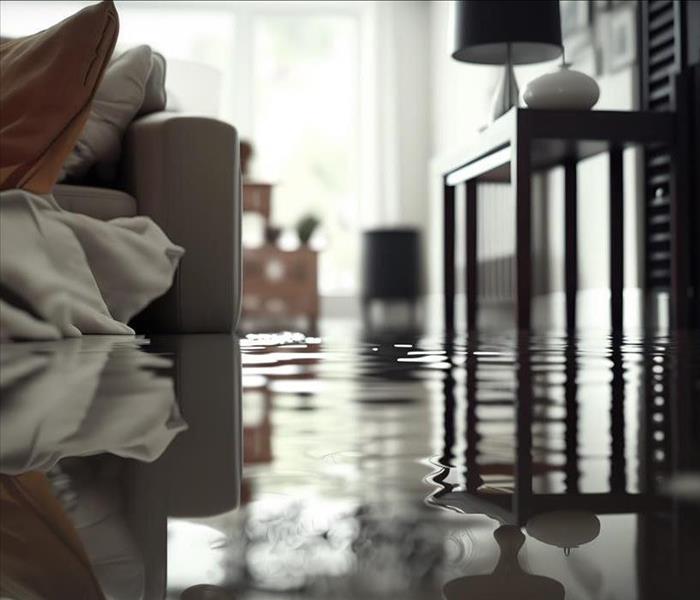 Has an unexpected flood recently hit your home? SERVPRO of Kent is here to restore. Call us today!
Has an unexpected flood recently hit your home? SERVPRO of Kent is here to restore. Call us today!
It’s no secret that we experience a lot of rainy days here on the West Coast, and rain can be particularly troublesome if it starts to infiltrate our homes. Flood situations can happen in the blink of an eye, leaving you with a serious situation and a lot of questions.
Floods also don’t only happen when it rains! A burst water line or broken water main down the street can cause flood conditions unexpectedly. Knowing what to do before, during and after a flood can help you stay safe and in control.
Staying Safe in Any Conditions
Heeding all weather warnings is crucial for your safety, but especially when they involve flash flooding concerns. If a flood warning is issued, start getting your home ready immediately or head for home right away if you are out and about. You definitely do not want to be stranded in your car when the rain comes falling down.
Tidy up your yard by bringing children’s toys, outdoor lawn equipment and yard maintenance tools inside or into your garage. Tie down whatever cannot be moved inside, remembering that even just a few inches of fast moving water can sweep away really heavy objects.
You should also get your cars inside the garage, if you have one. Once that is all done, head inside to locate your emergency kit and weather radio. Find a spot to wait out the storm safely and stay tuned into the local weather reports.
When the Water Starts to Flow
Floods can happen quickly with huge gushes of water or they can happen slowly as water leaks down your walls or through cracks in your foundation. If water does start to get into your home, stay calm and stay above the water line.
Eventually, the water will stop rushing in and you can start to assess the situation. Move slowly around your home in the aftermath of a flood, as water can easily compromise the safety of your walls and floors. Wear sturdy boots and long pants if you must walk through standing water to get to safety.
You should also prioritize taking pictures of the damage. Fresh images following a flood is one of the best things you can do to set you up for success with your insurance company. After that, get us on the phone so we can get started on your restoration.
Restoring Your Home
Our first goal will be to secure your home to prevent any more water from getting inside, and then we get right to work to remove the standing water and lingering moisture. The longer water sits, the more dangerous it can be for your home, so we prioritize efficiency. We will also start drying out your more fragile possessions at this time.
When everything is dry and ready to be returned into your home, we will work on your repairs. Floodwater can ruin walls, floors and even ceilings, and it can cause serious structural damage.
The good news is that no damage is too large or too destructive for us to confidently handle. Call us as soon as you suffer flood damage so we can take care of you.
Recovering after a flood is possible with SERVPRO of Kent. Contact us 24/7 for quick flood restoration assistance.
The Troublesome Properties of Mold | SERVPRO of Kent
12/22/2023 (Permalink)
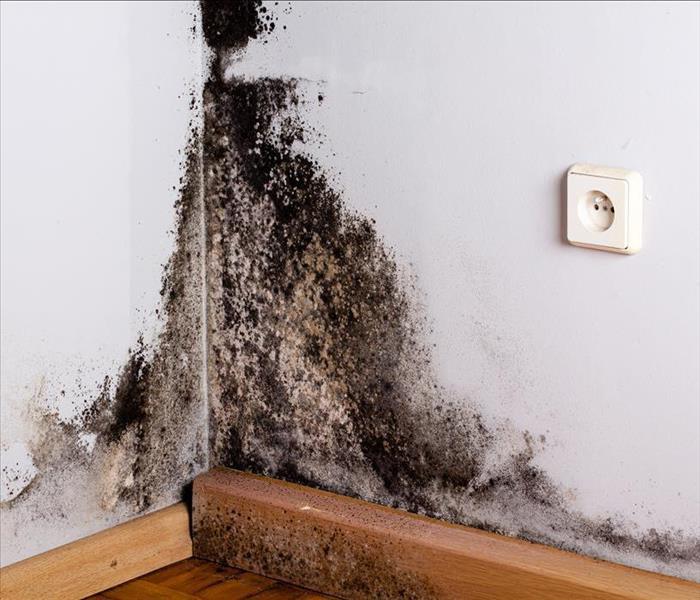 Finding mold in your home can feel overwhelming. SERVPRO of Kent is here for the rescue! Give us a call today.
Finding mold in your home can feel overwhelming. SERVPRO of Kent is here for the rescue! Give us a call today.
There are many different threats that could impact our homes on a daily basis. Fires, floods and strong storms can leave you with serious damage in a short amount of time. One threat that is not often talked about but can have a significant impact on your home is mold.
Mold infestations can be dangerous in your home, so learning how they form and spread can help you take steps to reduce your risk of an infestation every day.
Getting to Know Mold
Did you know that mold is everywhere? Microscopic mold spores are constantly floating through the air both inside and outside your home. These spores can easily get inside our homes through open windows or doors or even through your HVAC system. While mold spores are everywhere, that doesn’t mean mold infestations will grow everywhere.
Mold grows best in damp, dark environments, so places like attics, basements and bathrooms can easily become the perfect breeding grounds for infestations. Once a few mold spores settle into one of these areas, they can spark the growth of an entire colony in as little as 24 to 48 hours. Mold can be green and slimy, white and chalky or black and fuzzy-looking. No matter how it appears, it often shares the same musty or earthy odor.
Preventing Mold Infestations
Since moisture is the key factor to mold infestations, controlling the amount of moisture in your home and air is crucial. Run fans continually in high-humidity areas like bathrooms and kitchens, and try to completely dry these areas out at least once a day.
You should also make sure your home’s humidity levels are controlled. Aim for between 30 and 50% humidity for optimal comfort and a reduced risk of a mold infestation.
Another important step in mold prevention is to address water leaks quickly. Lingering moisture anywhere in your home can lead to mold issues, so track down leaks right away and address repairs just as fast. If moisture lingers for even just a day, you could wind up with a stubborn mold infestation on your hands.
Overcoming Mold Infestations
Even if you do everything right in preventing mold, an infestation can still take you by surprise. If you uncover a mold colony when digging around your attic looking for decoration boxes or stumble upon one in your basement while tracking down a water leak, do your best to not disturb the mold. Certain types of mold can be dangerous or toxic if inhaled, so back away and call us instead.
Our team will confidently identify the type of mold, which will then tell us how to approach the restoration. We have the proper safety gear and training to handle any type of mold situation.
We will filter the air, secure the area and give the entire space a deep-cleaning. We can also tackle structural repairs at this time! Depending on how long the mold was left to sit and grow, you could be dealing with some serious structural integrity problems with your beams, joists and floors. Our team will ensure your home is safe and structurally sound in no time at all.
Mold can grow quickly and without much warning. Contact SERVPRO of Kent for a quick mold mitigation.
5 Ways Kent, WA Homeowners Can Prevent House Fires This Thanksgiving
11/7/2023 (Permalink)
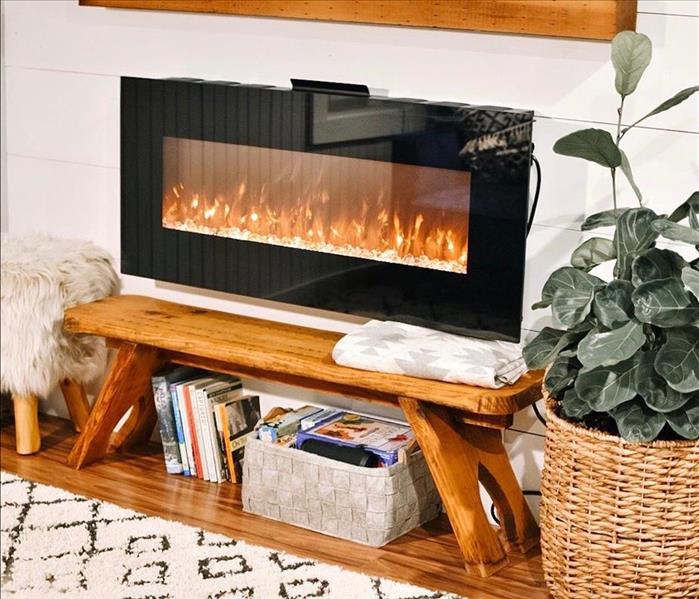 As a homeowner in Kent, Washington, it's essential to be proactive in preventing house fires during this festive season.
As a homeowner in Kent, Washington, it's essential to be proactive in preventing house fires during this festive season.
Thanksgiving is a time for gathering with loved ones, expressing gratitude, and indulging in delicious meals. However, it's also a time when house fires are more common due to increased cooking and heating activities. As a homeowner in Kent, Washington, it's essential to be proactive in preventing house fires during this festive season. In this blog, we'll explore five ways you can protect your home and loved ones from the threat of house fires this Thanksgiving.
- Kitchen Safety
The kitchen is the heart of Thanksgiving preparations, but it's also the most common location for house fires. To ensure kitchen safety:
a. Supervise Cooking: Never leave your cooking unattended. Whether you're roasting a turkey, frying, or baking, stay in the kitchen to monitor the food.
b. Keep Flammable Items Away: Keep kitchen towels, paper towels, and oven mitts away from the stove or open flames to prevent accidental ignition.
c. Have a Fire Extinguisher: Keep a fire extinguisher rated for kitchen fires in your kitchen, and make sure you and your family know how to use it.
d. Avoid Overloading Outlets: Don't overload electrical outlets with appliances, as overheating can lead to electrical fires. Use power strips with surge protectors if you need extra outlets.
- Maintain Heating Equipment
As the weather gets colder, Kent residents often turn to heating equipment, which can pose a fire risk if not properly maintained. Here's what you can do:
a. Clean Chimneys and Fireplaces: Have your chimney and fireplace inspected and cleaned regularly by a professional to remove creosote buildup, a common cause of chimney fires.
b. Check Space Heaters: If you use space heaters, ensure they are in good working condition and placed at least three feet away from flammable materials.
c. Replace Filters: Change the filters in your HVAC system to prevent the buildup of dust and debris that can lead to overheating and fires.
- Fire-Resistant Decorations
Thanksgiving decorations can be beautiful but also pose a fire hazard. Be mindful of the following:
a. Candles: Opt for battery-operated LED candles instead of open flames, or use candle holders that prevent the flame from coming into contact with flammable materials.
b. Keep Decorations Away from Heat Sources: Ensure that decorations, such as tablecloths and centerpieces, are not too close to stoves, ovens, or other heat sources.
c. Don't Overload Outlets: When plugging in holiday lights or decorative items, avoid overloading electrical outlets.
- Smoke Alarms and Fire Escape Plans
Ensure your home is equipped with functioning smoke alarms. Regularly check the batteries and test them to ensure they work correctly. Additionally, create and practice a fire escape plan with your family. Knowing what to do in case of a fire can save lives.
- Deep-Fryer Safety
Deep-frying a turkey can be a delicious alternative to traditional roasting, but it comes with certain risks. Follow these safety tips:
a. Use an Appropriate Fryer: Make sure your turkey fryer is designed for the purpose and placed on a flat, stable surface.
b. Don't Overfill: Always follow the manufacturer's instructions for the correct amount of oil and turkey size.
c. Fry Outdoors: Set up the deep fryer outside, away from any structures, and never use it in a garage or enclosed area.
This Thanksgiving, take the necessary precautions to ensure the safety of your home and loved ones. By following these five safety measures - maintaining a vigilant kitchen, keeping heating equipment in good condition, using fire-resistant decorations, having working smoke alarms and an escape plan, and practicing deep-fryer safety - you can significantly reduce the risk of house fires in Kent, WA during the holiday season. Enjoy your Thanksgiving with peace of mind and gratitude for a safe and memorable celebration.
Happy Halloween from SERVPRO of Kent!
10/30/2023 (Permalink)
 SERVPRO of Kent is here for all your cleanup and restoration needs.
SERVPRO of Kent is here for all your cleanup and restoration needs.
Hello, dear readers! The spooky season is upon us, and it's time to celebrate all things Halloween. Here at SERVPRO of Kent, we want to wish each and every one of you a thrilling and safe Halloween filled with fun, candy, and, of course, some well-deserved scares.
Halloween is that magical time of the year when we get to unleash our creativity and embrace our inner ghouls and goblins. It's a time for dressing up, indulging in delicious treats, and, most importantly, coming together as a community.
Whether you're out trick-or-treating with your family, hosting a haunted house, or simply handing out candy to eager little witches and superheroes, remember to take a moment to appreciate the joy and excitement that this holiday brings. Halloween is all about making memories and sharing smiles.
At SERVPRO of Kent, we understand that Halloween isn't just about the treats; it's also about the tricks and the spooky thrills that make our hearts race. We want to remind you that while Halloween is a time for fun, safety should always come first. Here are a few tips to ensure a happy and safe Halloween:
Costume Safety: Choose costumes that are visible at night, use reflective materials, and ensure that masks and costumes do not obstruct vision. Make sure the fabric isn't too long - draping fabrics can potentially catch fire.
Candy Check: Examine all the candy and treats your children collect to ensure they are safe to eat. Discard any open or suspicious-looking items.
Walking Safety: If you're out trick-or-treating, always use crosswalks, follow traffic rules, and carry a flashlight or wear reflective clothing to increase visibility.
Home Safety: If you're hosting a Halloween party or decorating your home, be mindful of fire safety and avoid using open flames near flammable materials.
Pet Safety: Keep your pets indoors or in a safe, quiet place to prevent them from getting stressed by the Halloween festivities.
Remember, Halloween is about creating cherished memories with family and friends, and we hope you have a spooktacular time doing just that!
As always, SERVPRO of Kent is here for all your cleanup and restoration needs. Should any unexpected events occur during the Halloween season, you can count on us to provide the prompt and professional service you deserve.
So, from all of us at SERVPRO of Kent, we wish you a howlingly good Halloween! Have a blast, stay safe, and enjoy all the tricks and treats that come your way. Happy Halloween!
If you have any questions or need our services, don't hesitate to reach out. We're here to help 24/7.
The Chilling Consequences: How Cold Weather Can Lead to Water Damage
10/26/2023 (Permalink)
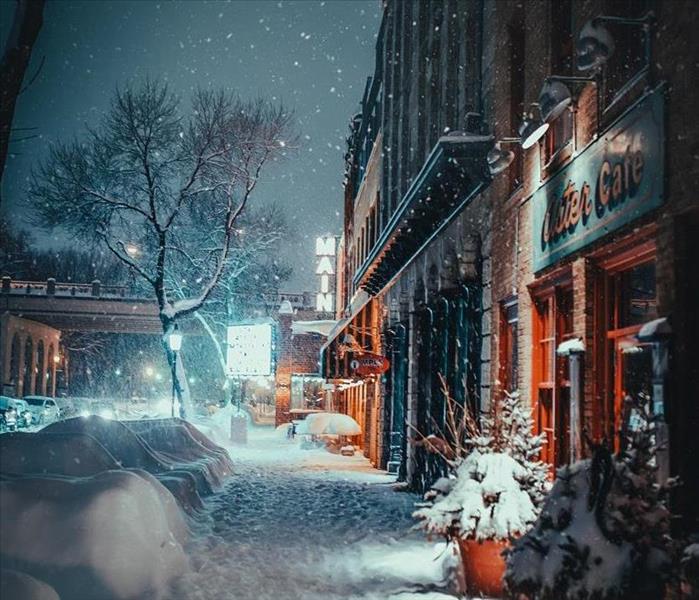 Winter's icy grip can lead to a variety of water-related problems.
Winter's icy grip can lead to a variety of water-related problems.
While cold weather may bring cozy nights by the fire and picturesque snow-covered landscapes, it can also present a hidden threat to your home – water damage. Winter's icy grip can lead to a variety of water-related problems that, if left unaddressed, can result in costly and inconvenient damage to your property. In this blog, we'll explore how cold weather can lead to water damage and what you can do to prevent it.
Frozen Pipes
One of the most common culprits of cold weather-related water damage is frozen pipes. When the temperature drops significantly, water inside your pipes can freeze. As water freezes, it expands, which can cause pipes to crack or burst. When the ice thaws, the water starts to leak, leading to potential flooding and extensive damage. To prevent frozen pipes:
- Insulate exposed pipes, especially in unheated areas.
- Let faucets drip slightly to keep water moving.
- Keep your home's temperature consistently warm, even when you're away.
Ice Dams on Roofs
Ice dams are another concern during cold weather, particularly in regions with frequent snowfall. These occur when snow on your roof melts, then refreezes at the eaves, blocking the proper drainage of water. As more melted snow accumulates behind the dam, it can seep under roof shingles, causing water damage to your attic and interior spaces. To prevent ice dams:
- Ensure your attic is well-insulated and ventilated to maintain a uniform roof temperature.
- Safely remove snow from your roof using a roof rake.
Condensation
Cold weather can lead to indoor humidity, which, in turn, can result in condensation on windows and walls. Over time, this condensation can lead to water damage and mold growth. To minimize condensation:
- Use a dehumidifier to maintain appropriate indoor humidity levels.
- Seal any gaps around doors and windows to reduce cold air infiltration.
- Make sure your home is adequately ventilated to circulate indoor air.
Snowmelt
While it may seem harmless, snowmelt can be a source of water damage if not managed properly. As the temperature rises, accumulated snow and ice can turn into a significant amount of water that can infiltrate your home through foundation cracks, poorly sealed windows, or damaged roof areas. To prevent snowmelt-related water damage:
- Keep your gutters and downspouts clean and free from ice and snow.
- Ensure proper grading around your home to direct snowmelt away from the foundation.
- Seal any cracks or gaps in your home's exterior to prevent water infiltration.
Cold weather can bring about a range of water-related challenges that, if not addressed, can lead to significant water damage. Taking proactive measures to prevent frozen pipes, ice dams, condensation, and snowmelt infiltration can help safeguard your home from these winter woes. In the event that you do experience water damage, it's crucial to act quickly and seek professional help to mitigate and restore your property. Remember, with the right precautions, you can enjoy the beauty of winter without falling victim to its water-related pitfalls.
3 Ways to Prepare Your Home for Stormy Weather
10/19/2023 (Permalink)
 Stormy weather can bring heavy rain, strong winds, and potential damage to your home.
Stormy weather can bring heavy rain, strong winds, and potential damage to your home.
Stormy weather can bring heavy rain, strong winds, and potential damage to your home. While you can't control the weather, you can take steps to prepare your home to withstand the elements. With the right precautions in place, you can minimize the risk of damage and ensure your family's safety during stormy weather. Here are three essential ways to prepare your home for stormy weather.
Reinforce Your Home's Structure
The first step in preparing your home for stormy weather is to ensure its structural integrity. This will not only protect your property but also safeguard your family. Here are some ways to reinforce your home:
a. Roof Inspection and Maintenance: The roof is one of the most vulnerable parts of your home during a storm. Inspect it for loose or damaged shingles and make necessary repairs. Consider reinforcing your roof with hurricane straps or clips to prevent it from being blown off in high winds.
b. Secure Windows and Doors: Install storm shutters or impact-resistant windows to protect against flying debris. Reinforce garage doors to prevent them from collapsing in high winds. Properly sealing windows and doors can also prevent water from entering your home.
c. Maintain Your Foundation: Ensure that your foundation is in good condition by addressing any cracks or weaknesses. Consider elevating your home if you live in a flood-prone area.
Create an Emergency Kit
Having a well-prepared emergency kit can be a lifesaver during stormy weather. Make sure your kit includes essential items such as:
a. Non-perishable Food and Water: Stock up on canned food, energy bars, and bottled water to sustain your family in case of power outages or disruptions in the water supply.
b. First Aid Supplies: Include a well-stocked first aid kit with essential supplies like bandages, antiseptic, prescription medications, and any necessary medical equipment.
c. Flashlights and Batteries: Power outages are common during storms, so having a supply of flashlights and spare batteries is crucial.
d. Portable Phone Charger: Keep your devices charged with a portable charger to stay connected and receive important updates.
e. Important Documents: Store important documents, such as passports, insurance policies, and medical records, in a waterproof container.
Landscape and Yard Preparation
Your home's surroundings can either protect it or make it more vulnerable to storm damage. Here are some tips for preparing your yard and landscape:
a. Trim Trees and Shrubs: Prune branches and remove dead or overhanging limbs that could fall onto your home during strong winds. Keeping trees well-maintained reduces the risk of damage.
b. Secure Outdoor Furniture and Objects: Patio furniture, garden tools, and other outdoor items can become projectiles in high winds. Store or secure them before a storm arrives.
c. Clean Gutters and Downspouts: Make sure your gutters and downspouts are clear of debris, so water can flow freely. This prevents water from backing up and causing damage to your roof or foundation.
Preparation is key to protecting your home and loved ones from stormy weather. By reinforcing your home's structure, creating an emergency kit, and tending to your landscape and yard, you can significantly reduce the risk of damage and improve your family's safety during adverse weather conditions. Remember that planning and preparation can make all the difference when the skies turn dark and storm clouds gather. Stay safe and be ready for whatever Mother Nature sends your way.
Fall is Here: 3 Essential Home Preparations to Prevent Water Damage in Kent
9/29/2023 (Permalink)
 Fall is a beautiful season in Kent, but it also comes with its own set of challenges for homeowners.
Fall is a beautiful season in Kent, but it also comes with its own set of challenges for homeowners.
As the vibrant colors of autumn paint the landscape and cooler temperatures settle in, fall is officially upon us in Kent. It's a season filled with cozy sweaters, pumpkin spice lattes, and crisp air. However, it's also a time when homeowners need to be proactive in safeguarding their homes against potential water damage. From leaves clogging gutters to heavy rains, fall can bring about unique challenges for homeowners. Let's explore three crucial steps that Kent homeowners can take to prepare their homes and prevent water damage. And, if the unexpected does occur, SERVPRO is here to provide professional water damage restoration and mitigation services.
Clean and Inspect Gutters and Downspouts
One of the most important tasks in preparing your home for fall is cleaning and inspecting your gutters and downspouts. Fallen leaves, twigs, and debris can quickly accumulate in your gutters, causing blockages that prevent proper drainage. When heavy rains hit, clogged gutters can lead to overflowing water, damaging your roof, siding, and even your foundation. To prevent this, take the time to:
- Remove debris from gutters and downspouts.
- Inspect them for any signs of damage or leaks.
- Ensure that downspouts direct water away from your home's foundation.
- Regular maintenance of your gutters and downspouts can help keep water flowing freely and prevent costly water damage repairs.
Check for Roof Leaks and Damaged Shingles
The roof is your home's first line of defense against the elements, and fall is an ideal time to inspect it for any vulnerabilities. Look for missing or damaged shingles, as well as signs of water stains on your ceilings or walls inside your home. If you spot any issues, it's crucial to address them promptly to prevent water from infiltrating your home. Roof repairs are often more cost-effective when caught early, and they can save you from more extensive damage down the road.
Seal Windows and Doors
Leaky windows and doors can let cold air and rainwater into your home, leading to increased energy bills and potential water damage. Check the seals around your windows and doors for cracks or gaps. If you find any, apply weatherstripping or caulking to seal them properly. Properly sealed windows and doors not only enhance your home's energy efficiency but also protect it from moisture intrusion during fall rains.
Fall is a beautiful season in Kent, but it also comes with its own set of challenges for homeowners. By taking these proactive steps to prevent water damage, you can enjoy the season with peace of mind. However, if water damage does occur despite your preparations, SERVPRO is here to help. Our expert team offers professional water damage restoration and mitigation services to get your home back to its pre-damaged condition swiftly and efficiently. Contact SERVPRO today for prompt assistance with water damage restoration and peace of mind throughout the fall season.
 Are you left with the aftermath of storm damage to your home? Call SERVPRO of Kent today. We are here to restore quickly!
Are you left with the aftermath of storm damage to your home? Call SERVPRO of Kent today. We are here to restore quickly!






 24/7 Emergency Service
24/7 Emergency Service








